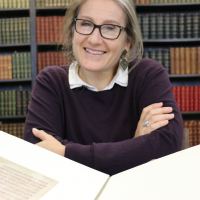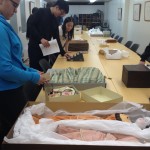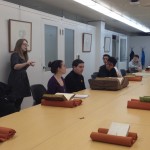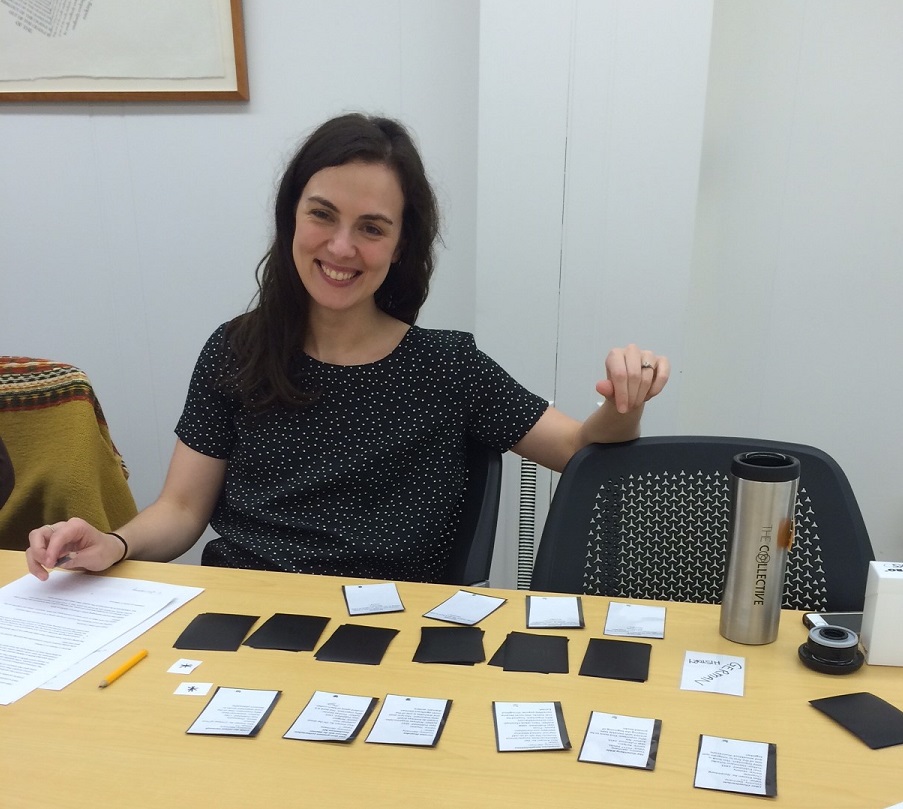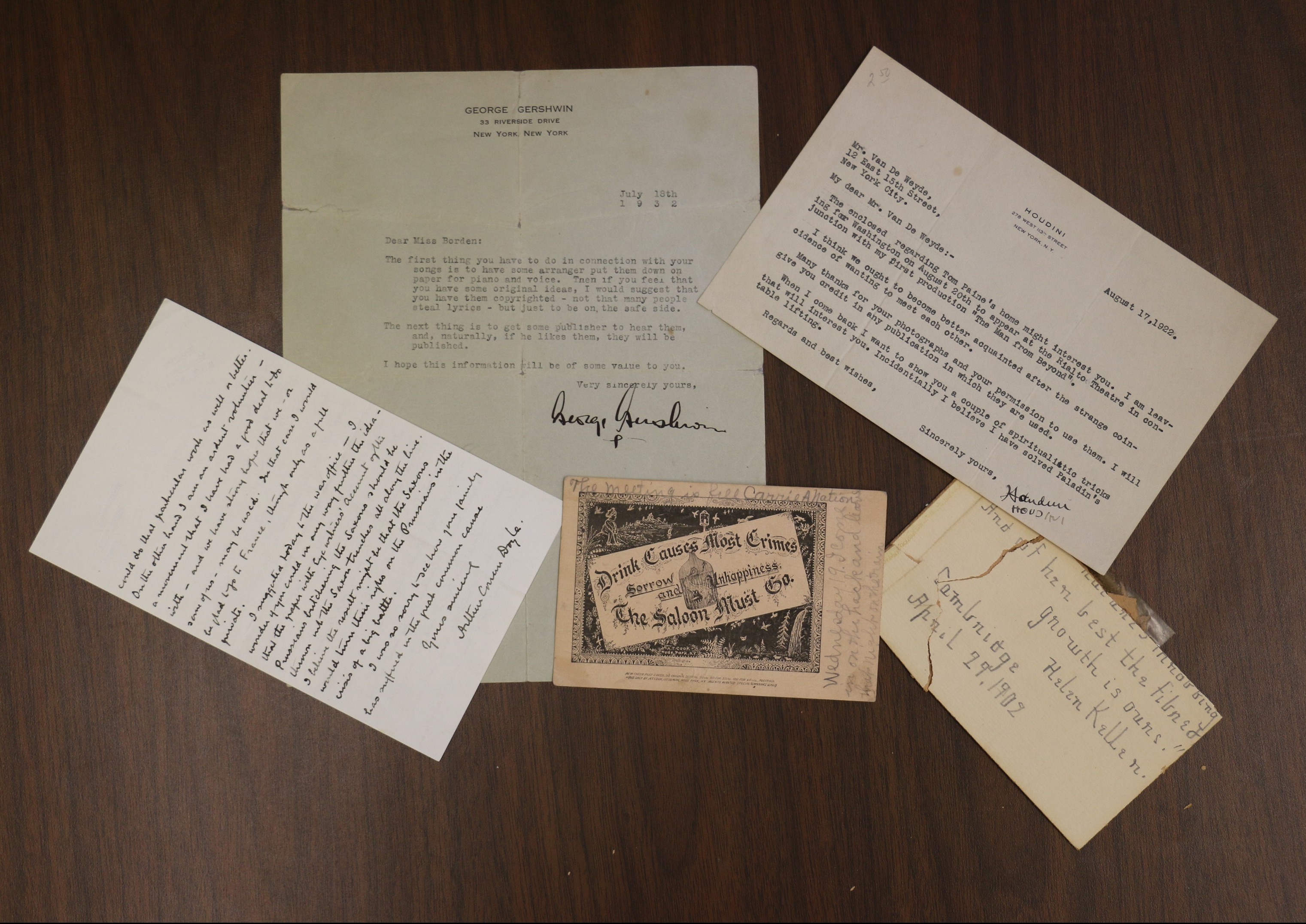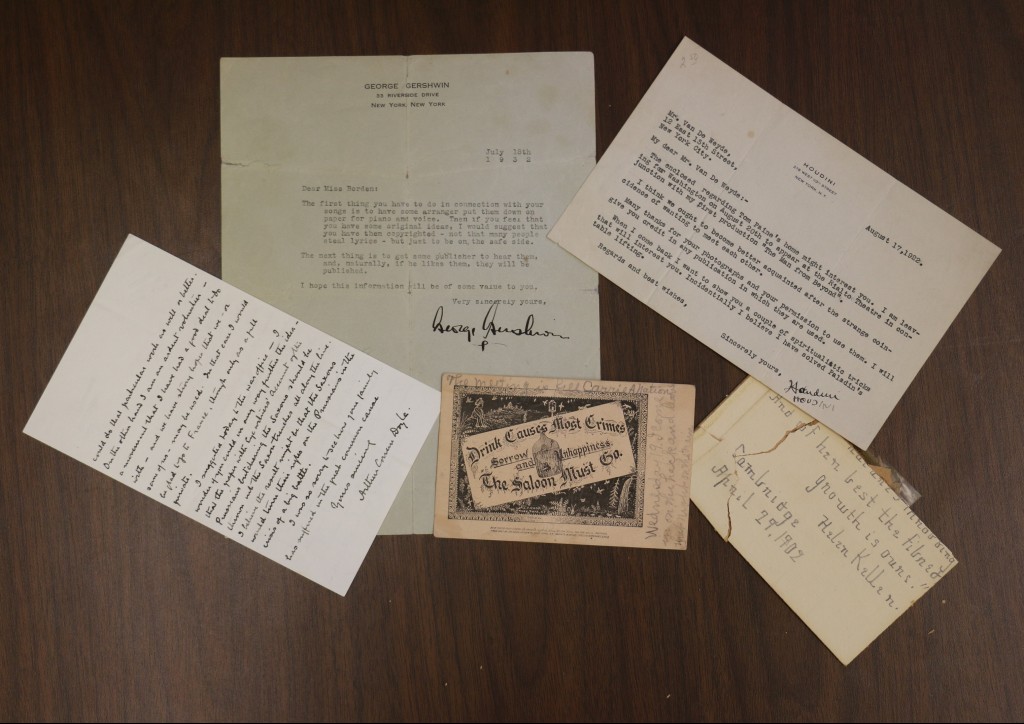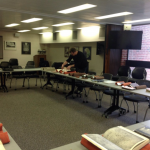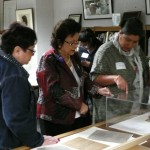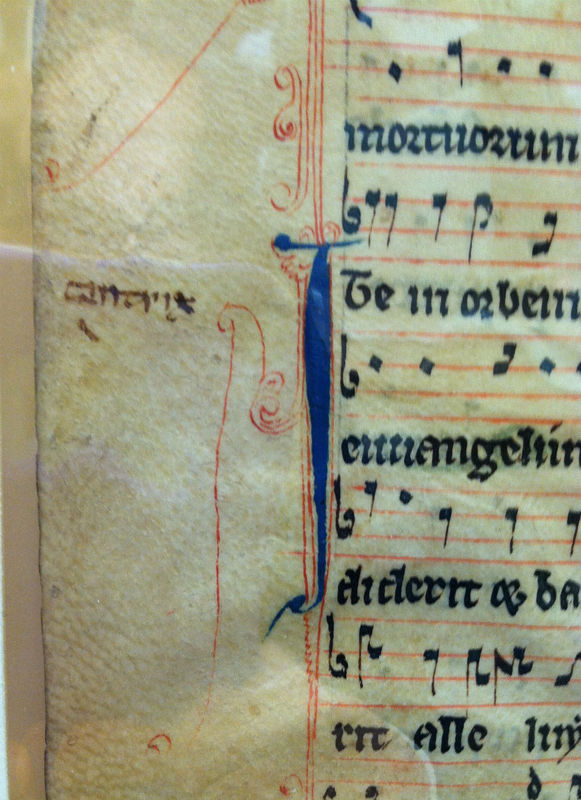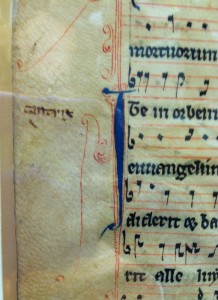By: Amy H. Chen
“The year is 1450. Johannes Gutenberg is printing a book, one of the first in the world. When he is finished, the printed book is born. Follow the history of the book through the next six centuries, through technological advancements, scientific breakthroughs, artistic triumphs, shifts in the socio-political climate, and the fluctuating financial market.”
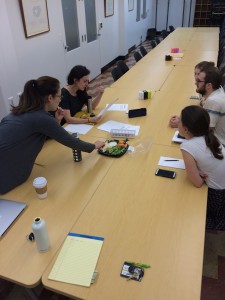
The following comes from the introduction to Special Collections Instruction Librarian Amy Chen’s game based on book history. This game can be played with cards only, as an enrichment activity within a traditional course, or as a stand-alone class.
Amy developed her game out of her interest in how gamification contributes to increased student learning outcomes in the classroom. Gamification offers students the ability to combine pedagogical challenges with play, motivating them to use fun to work through learning curves. To read a longer introduction to gamification, read Bohyun Kim’s “Keeping up with… Gamification” on the ACRL Blog.
On Tuesday, March 8, Amy conducted a play test of the card version of the game. A play test is when the game is played in order to figure out how the game’s design could be improved. Eight librarians, in two separate rounds of play, contributed their feedback. The first photograph is from the beginning of one of the play tests. The second photograph is of Katie Hassman, Undergraduate Engagement Librarian, who won her round. 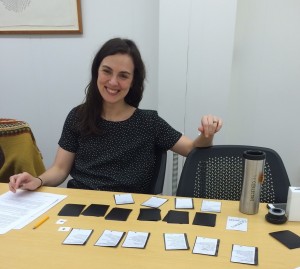
After revising the game back on the comments she received, Amy will be interested in reaching out to partner faculty who might like to integrate the game into their course discussions or assignments. If you are an instructor or faculty member at the University of Iowa and you are interested in learning more about the game or testing it for yourself later this spring, please email amy-chen@uiowa.edu.
Additionally, Amy will be teaching an honors first year seminar (1 credit hour) this fall on book history using the game to structure the entire semester’s class meetings, readings, and discussion.
You can follow the development of this game, which began in December 2015, by watching the hashtag #hotb on Amy’s twitter feed @amyhildrethchen.


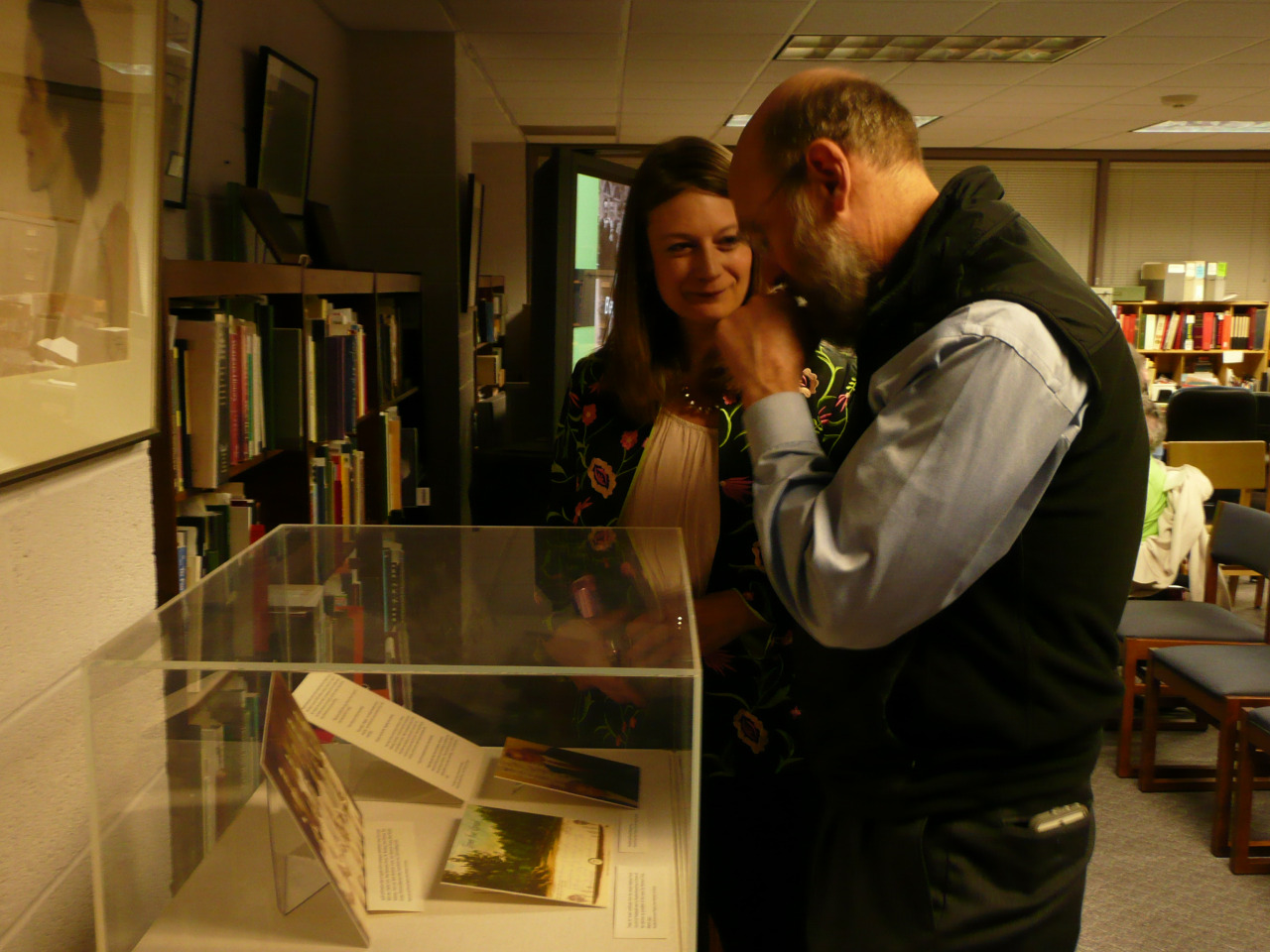
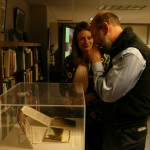



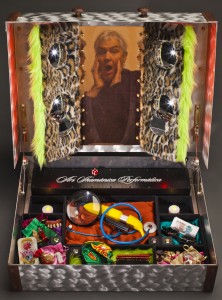 Wednesday, 3/30: Felicia Rice, Doc/Undoc (lecture performance), followed by a public conversation with Guillermo Gόmez-Pẽna (5 PM, Special Collections Reading Room).
Wednesday, 3/30: Felicia Rice, Doc/Undoc (lecture performance), followed by a public conversation with Guillermo Gόmez-Pẽna (5 PM, Special Collections Reading Room).  Spring Break week we had two class sessions: one from Grinnell and one from Coe College. Special collections staff co-taught a one credit museums studies spring break course with campus museum curators.
Spring Break week we had two class sessions: one from Grinnell and one from Coe College. Special collections staff co-taught a one credit museums studies spring break course with campus museum curators.



 The Iowa Women’s Archives had a post featured by Tumblr as part of a special curated group of posts for Women’s History Month. Consequently, the post now has nearly 1000 likes and reblogs. See the post about Gwendolyn Fowler and life after graduating as a certified pharmacist from the State University of Iowa in 1936 here:
The Iowa Women’s Archives had a post featured by Tumblr as part of a special curated group of posts for Women’s History Month. Consequently, the post now has nearly 1000 likes and reblogs. See the post about Gwendolyn Fowler and life after graduating as a certified pharmacist from the State University of Iowa in 1936 here: 
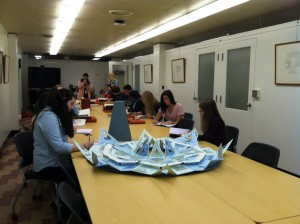 On Tuesday March 22, 2016 Special Collections welcomed 28 students from Norwalk High School, Norwalk, IA. The students were those of art teacher Maggie Harlow-Vogt. They had traveled all the way from Norwalk to Iowa City seeking inspiration from Special Collections and the Library’s Conservation Lab for their next art projects!
On Tuesday March 22, 2016 Special Collections welcomed 28 students from Norwalk High School, Norwalk, IA. The students were those of art teacher Maggie Harlow-Vogt. They had traveled all the way from Norwalk to Iowa City seeking inspiration from Special Collections and the Library’s Conservation Lab for their next art projects!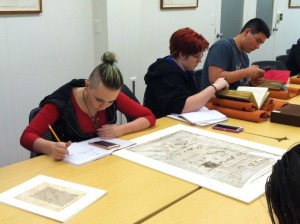 Heather Wacha, a graduate student in the Department of History, has been working to introduce area high school students to the value and importance of resources held in Special Collections. The Norwalk visit is part of a larger project that involves University of Iowa students transcribing and translating a 1699 Spanish will held in Special Collections for digital publication. The art students from Norwalk High School, along with Spanish students from Central Academy in Des Moines, are interacting with the Spanish will in a variety of ways that both fit their class curriculum and simultaneously generate enthusiasm and creativity. Each student’s final project will be able to be published on the same website that will hold the manuscript’s digital publication created by the UI students.
Heather Wacha, a graduate student in the Department of History, has been working to introduce area high school students to the value and importance of resources held in Special Collections. The Norwalk visit is part of a larger project that involves University of Iowa students transcribing and translating a 1699 Spanish will held in Special Collections for digital publication. The art students from Norwalk High School, along with Spanish students from Central Academy in Des Moines, are interacting with the Spanish will in a variety of ways that both fit their class curriculum and simultaneously generate enthusiasm and creativity. Each student’s final project will be able to be published on the same website that will hold the manuscript’s digital publication created by the UI students.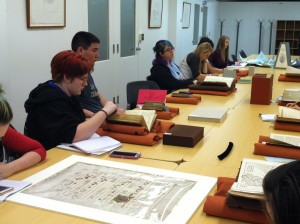 From Harlow-Vogt’s perspective, Tuesday’s visit sparked amazing conversations in the bus on the way home. The following day in their art classes, Harlow-Vogt noted that “The students who did not go to the University of Iowa were a bit overwhelmed by the passion and excitement that the other students brought back with them. Those that could not go felt that they had really missed out on a great adventure!”
From Harlow-Vogt’s perspective, Tuesday’s visit sparked amazing conversations in the bus on the way home. The following day in their art classes, Harlow-Vogt noted that “The students who did not go to the University of Iowa were a bit overwhelmed by the passion and excitement that the other students brought back with them. Those that could not go felt that they had really missed out on a great adventure!”